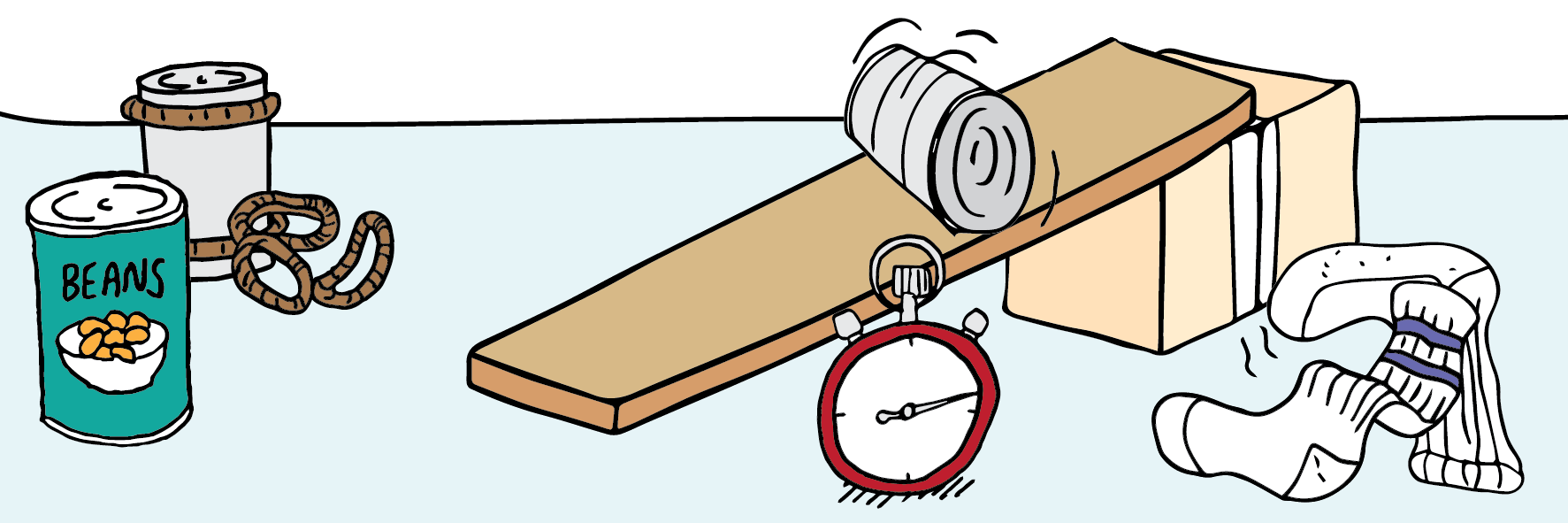Access keys for nzta.govt.nz
- h Home
- m Menu
- 0 Show list of access keys
- 2 Skip to content
- 3 Skip to top

Students continue to explore gravity while also experimenting with how friction slows things down.
Activity A3: Slippery slopes and cans on the run [PDF, 291 KB]
This is a hands-on exploratory activity which involves the students timing a can of food rolling down a ramp.
The amount of friction the can has is then varied by adding things like hairbands or socks (fine and more chunky varieties make a good contrast).
Discussion about keeping the height of the ramp and the launch point of the can the same each time will assist students to understand the need for a consistent method if their results are to have meaning or be compared to another group's results. It is easier to time if you do not set the ramp too high.
At some stage, introducing the terms “variables” (in this case the surface being rolled on) and “constants” (in this case the can, the ramp height and the launch position) may be appropriate. Depending on the ages of the students, recording of results can be done in a variety of ways.
This activity is adapted from Building Science Concepts Book 42: Marbles. Additional content support for teachers can be found in this book.
Book 42: Marbles: Exploring Motion and Forces (TKI - Science online)(external link)
Investigating in Science – ask questions, find evidence, explore simple models and carry out appropriate investigations to develop simple explanations (Level 3-4).
NZ Curriculum | Science achievement objectives(external link)
Gather and interpret data, use evidence.
The five science capabilities (TKI - Science online)(external link)
Physical World. Explore, describe and represent patterns and trends for everyday examples of physical phenomena, such as movement, forces (Levels 3-4).
Gravity is a force which acts to pull objects.
Friction is a force between objects when they move over one another. It can be both useful and a problem.
The students can...